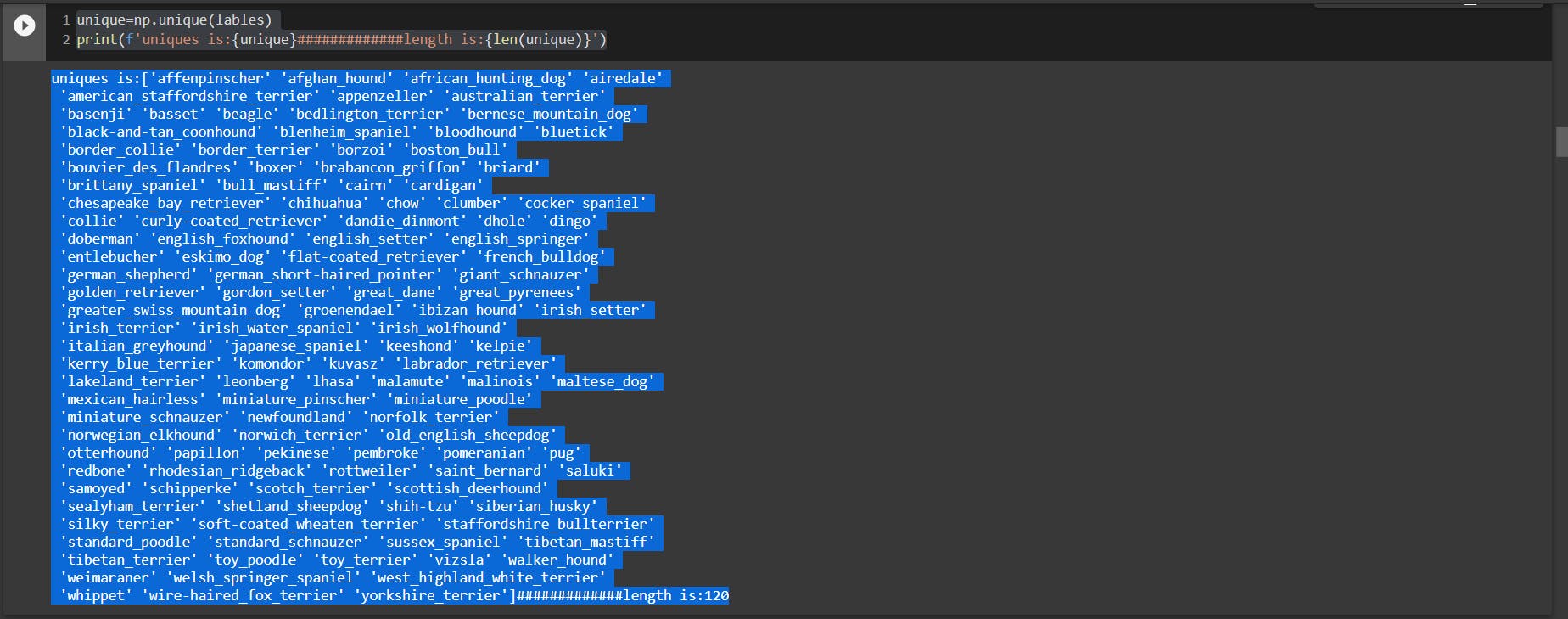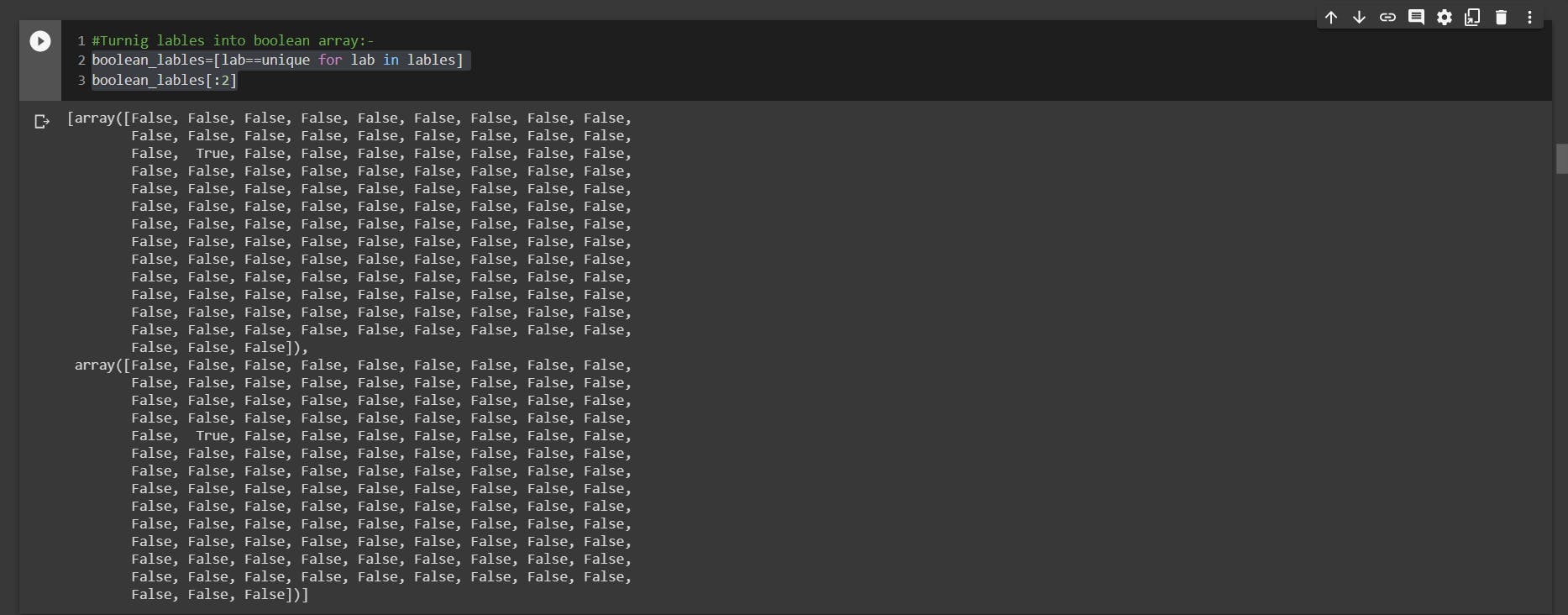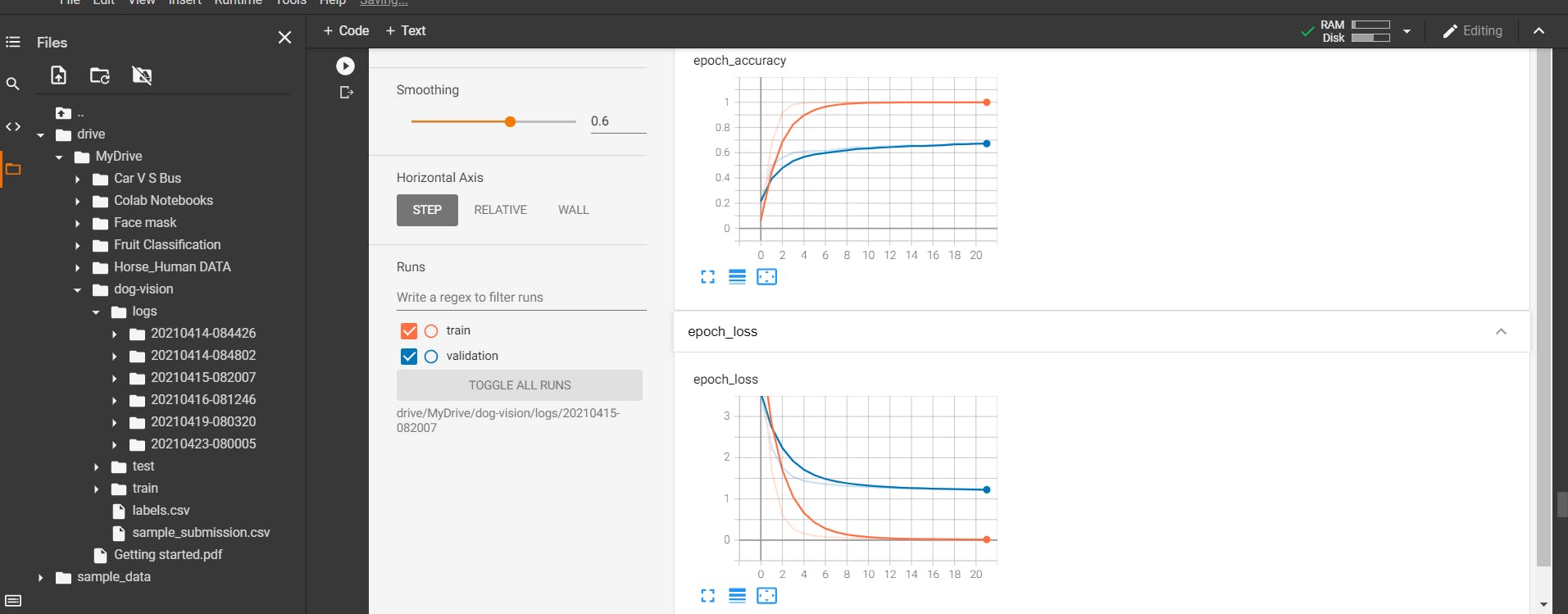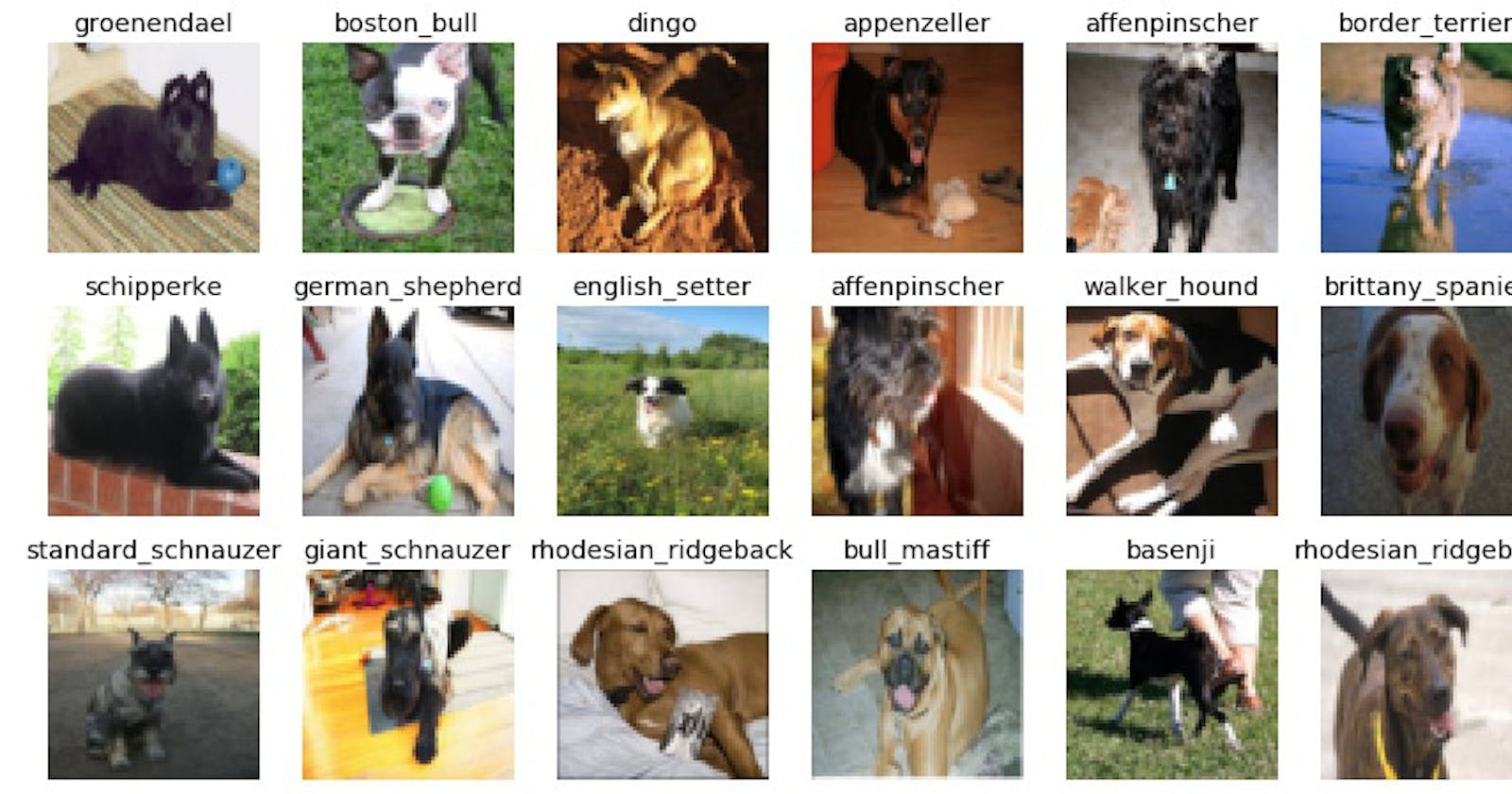Radhesh started speaking,
Hello Everyone this is the new blog about the project named as Dog Breed Classification,this project is based on CNN(convolutional neural network).
Description of Dataset:
Here we have a 10,000 image dataset of various Dog Breeds and each breed is a seperate class ,there is total 120 classes are present in the dataset
- I downloaded the Dataset from:
Platform discription:
After downloading the dataset ,i had imports the dataset into a Google Drive, Now,you have a question in your mind that Heyy! Radhesh Why you used a Google Drive If you can easily store it on your pc?
The answer is: i had to use a Google colab .
Google Colab: Colaboratory, or “Colab” for short, is a product from Google Research. Colab allows anybody to write and execute arbitrary python code through the browser, and is especially well suited to machine learning, data analysis and education.
- But the sole benifit is it provides a Free GPU For Faster Processing
Starting Of Project:
- Imporing necessory Libraries:
import pandas as pd
import numpy as np
import matplotlib.pyplot as plt
in this project i had used a Tensorflow and Keras
If you Want to know more about tensorflow and Keras, please visit here
- Importing Tensorflow and Keras:
import tensorflow as tf
#Importing tensorflow_hub
import tensorflow_hub as hub
print("version of tensorflow:",tf.__version__)
print("version of tensorflow_hub:",hub.__version__)
#checking for GPU
print("GPU","AVAILABLE :)"if tf.config.list_physical_devices("GPU") else "not Available :(")
Output:
- version of tensorflow: 2.4.1,
- version of tensorflow_hub: 0.12.0,
- GPU AVAILABLE :)
After importing the necessary libraries
I setuped the Path For Dataset ,so i can import it to my colab notebook
path='drive/MyDrive/dog-vision/train/'
Read the dataset:
lable=pd.read_csv('/content/drive/MyDrive/dog-vision/labels.csv')
Let's check the dataset by visualization:
lable['breed'].value_counts().plot.bar(figsize=(20,10));
Output:

CHECKING THE FILENAME MATCHESH THE NO. OF DATA IN TRAIN FOLDER:-
filename=[path + fname + '.jpg' for fname in lable['id']]
len_file=filename[:10]
import os
if len(os.listdir(path)[:10])==len(len_file):
print("length of data in filename matched with actual data in train folder")
else:
print('not matched')
Output: length of data in filename matched with actual data in train folder
- Storing the labels of dataset:
lables=lable['breed']
lables
Output:
0 boston_bull 1 dingo 2 pekinese 3 bluetick 4 golden_retriever ...
10217 borzoi 10218 dandie_dinmont 10219 airedale 10220 miniature_pinscher 10221 chesapeake_bay_retriever Name: breed, Length: 10222, dtype: object
Now, Converting the labels to an array
lables=lable['breed'].to_numpy()
lables
Output:
array(['boston_bull', 'dingo', 'pekinese', ..., 'airedale', 'miniature_pinscher', 'chesapeake_bay_retriever'], dtype=object)
- Creating a set of unique labels:
unique=np.unique(lables)
print(f'uniques is:{unique}#############length is:{len(unique)}')
Output:

From above image we can also verified that there is 120 unique classes
Turning labels into boolean array:
boolean_lables=[lab==unique for lab in lables]
boolean_lables[:2]
Output:

Creating Validation Set of Data:-
Creating and setting up our x & y variables:-
x=filename
y=boolean_lables
Now,splitting the validation dataset into train and test :-
from sklearn.model_selection import train_test_split
X_train,X_val,y_train,y_val=train_test_split(x[:NUM_IMAGES],
y[:NUM_IMAGES],
test_size=0.2,random_state=42)
len(X_train),len(X_val),len(y_train),len(y_val)
Output:- (800, 200, 800, 200)
After splitting we have to convert the image dataset into tensor so it can bo fittable into our tensorflow model To do this we have to write :
from matplotlib.pyplot import imread
image=plt.imread(filename[42])
image.shape
Output: (257, 350, 3)
Now,lets create a function to to turn it into (224,224)
IMG_SIZE=224
def preprocess_img(image_path):
'''takes image file path and turn it into tensor'''
# read img path into image
image=tf.io.read_file(image_path)
# turn thr jpg image into Tensors:-
image=tf.image.decode_jpeg(image,channels=3)
#Convert the color channel value into 0-255 to 0-1
image=tf.image.convert_image_dtype(image,tf.float32)
#Resize the image:-
image=tf.image.resize(image,size=[IMG_SIZE,IMG_SIZE])
return image
Now,Let's create a function which return a tuple(image,lable):-
def get_image_lable(img_path,lables):
image=preprocess_img(img_path)
return image,lables
- Create a Batch of dataset:
BATCH_SIZE=32
def create_batch(X,y=None,batch_size=BATCH_SIZE,valid_data=False,test_data=False):
if test_data:
print('creating test_data batches....')
data=tf.data.Dataset.from_tensor_slices(tf.constant(X))
data_batch=data.map(preprocess_img).batch(BATCH_SIZE)
return data_batch
elif valid_data:
print('creating valid_data batches...')
data=tf.data.Dataset.from_tensor_slices((tf.constant(X),
tf.constant(y)))
data_batch=data.map(get_image_lable).batch(BATCH_SIZE)
return data_batch
else:
print('create training_batch....')
data=tf.data.Dataset.from_tensor_slices((tf.constant(X),
tf.constant(y)))
data=data.shuffle(buffer_size=len(X))
data_batch=data.map(get_image_lable).batch(BATCH_SIZE)
return data_batch
train_data=create_batch(X_train,y_train)
val_data=create_batch(X_val,y_val,valid_data=True)
Checking our Batch:
train_data.element_spec,val_data.element_spec
Output:-
((TensorSpec(shape=(None, 224, 224, 3), dtype=tf.float32, name=None), TensorSpec(shape=(None, 120), dtype=tf.bool, name=None)), (TensorSpec(shape=(None, 224, 224, 3), dtype=tf.float32, name=None), TensorSpec(shape=(None, 120), dtype=tf.bool, name=None)))
- Visualising the DataBatch:-
def show_img(images,lable):
'''
Displayes a plot of images from data batch
'''
plt.figure(figsize=(10,10))
for i in range(25):
ax = plt.subplot(5,5,i+1)
plt.imshow(images[i])
plt.title(unique[lable[i].argmax()])
plt.axis('off')
train_images,train_lables=next(train_data.as_numpy_iterator())
show_img(train_images,train_lables)
Output:-

Building Model:-
To building the model i had used the imagenet(it is the pretrained model for boosting the performance and accuracy of our own model) .
To use this copy and paste the link:-
#input shape:-
INPUT_SIZE=[None,IMG_SIZE,IMG_SIZE,3]#batch ,height ,width,color-channel
#output shape:-
OUTPUT_SIZE=len(unique)
#setup Model url from tensorflow_hub:-
MODEL_URL='https://tfhub.dev/google/imagenet/mobilenet_v2_130_224/classification/4'
def create_model(input_shape=INPUT_SIZE,output_shape=OUTPUT_SIZE,model_url=MODEL_URL):
print('creating model with:',MODEL_URL)
model=tf.keras.Sequential([
hub.KerasLayer(model_url),#1st layer input layer
tf.keras.layers.Dense(units=output_shape,activation='softmax')#output layer
])
model.compile(
loss=tf.keras.losses.CategoricalCrossentropy(),
optimizer=tf.keras.optimizers.Adam(),
metrics=['accuracy']
)
model.build(input_shape)
return model
models=create_model()
models.summary()
Output:-

Now,creating the logdirectory for tensorbord:-
Loading the tensorbord:-
%load_ext tensorboard
import datetime
import os
def create_tb_callback():
log_dir=os.path.join('/content/drive/MyDrive/dog-vision/logs',
datetime.datetime.now().strftime("%Y%m%d-%H%M%S"))
return tf.keras.callbacks.TensorBoard(log_dir)
create early stopping callbacks:-
early_stopping=tf.keras.callbacks.EarlyStopping(monitor='val_accuracy',
patience=3)
Now,fit the datasets into our model:-
#creating a function to train model:-
def train_model():
model=create_model()
tensorboard=create_tb_callback()
model.fit(x=train_data,
epochs=NUM_EPOCHS,
validation_data=val_data,
validation_freq=1,
callbacks=[tensorboard,early_stopping])
return model
model=train_model()
Output:-

So,our model is now,trained with good accuracy :)
Loading Tensorboard result:-

So,this the end of my project "Dog breed Classification" hope you will like it, next time i will came back with new projects till then Thank you :)
